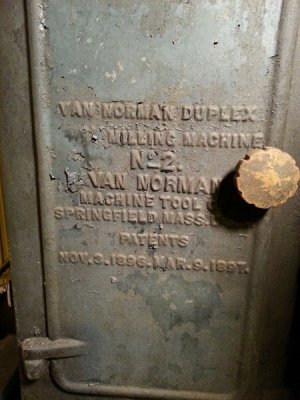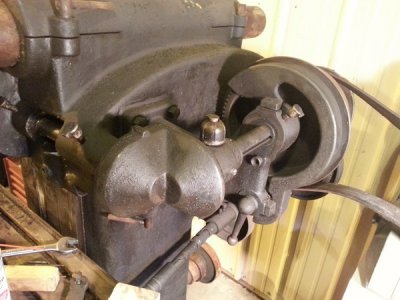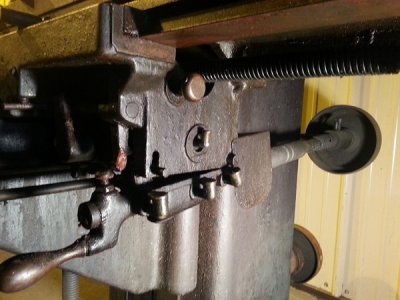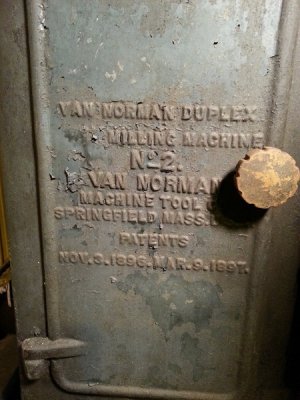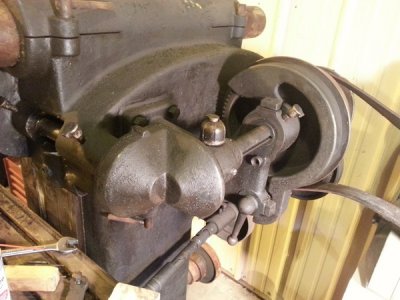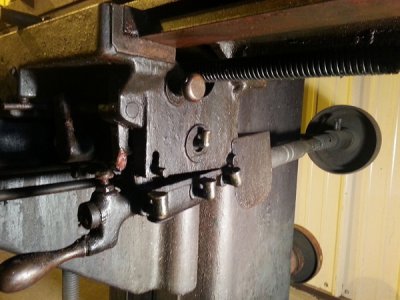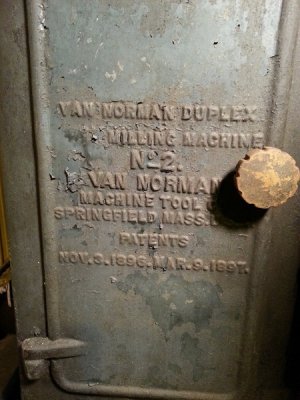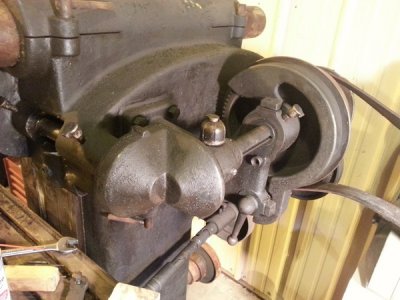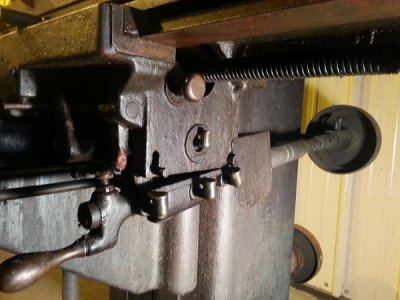Hi Joe,
I can't tell from the photos, but it looks like you might have an adapter in the spindle. A couple of other No. 2 duplex machines have shown up on another site; they seem to have B&S (Brown & Sharpe) #13 taper spindles. B&S #13 was common for larger Van Norman machines prior to WWII; although your machine may well have been made before WWI...
A full length B&S #13 is 1.75" at the small end and about 7.75" long; however, Van Norman used a B&S #13 short taper. Both are about 2” at the large end; I can’t find the specs for the small end of a short #13. How big is the through hole in your spindle? A "modern" Van Norman C-taper spindle would have an ID under an inch; if your ID is closer to 1.75” or larger, it's probably B&S #13. Reach up the spindle nose with a wire bent into a hook and see if you can feel the back of a taper adapter.
Another thing that makes me think that this is a taper adapter is the fact that it's missing the drive lugs for a horizontal arbor, common to all "modern" C-taper spindles. The B&S #13 to C-taper adapters don't have the arbor drive lugs. If it's a B&S #13 you're in luck because you could make up an adapter for something like R8, NMTB-30 or ER-40; NMTB-30 would probably make the most sense because you can get wider range of tooling, including horizontal milling arbors.
Here's a YouTube video of a No. 2 running:
You might see if you can contact the owner. I believe that he's up in Ontario.
Van Norman made a smaller version of your machine, the No. 1/2 (say "one slash two"; not "one half"). I used to own one. They are very similar to your machine and even have the November 3, 1896 patent date (but not the 1897). Here's link to a No. 1/2:
This one’s overhead motor setup is not typical; most of these machines probably started out life driven by a common, overhead drive line running the length of the shop.
I did a little digging on the US Patent website (
http://patft.uspto.gov/) and was able to locate the patents for the No. 2:
NOV.3.1896 = 570,723
MAR.9.1897 = 578,588
The 1897 patent seems to have to do with a worm-drive cutter-head, so I'm not sure how it applies to your machine. Send me an e-mail and I'll send you copies of the patent PDFs.
I also found an article about the machine in a 1896 edition of Scientific American (go to page 201):
Neither the drawings in the patent document nor the Scientific American article show the overarm support for horizontal milling that both the No. 1/2 and the No. 2 have.
As far as lubrication goes, this machine is probably 100 years old. I'm pretty sure that it would have all plain Babbit-type bearings. I don't know what type of grease to use there, but I would definitely consider completely disassembling the machine, cleaning and repairing as I went along. You might check with the guys in the antique machinery forum here. There are other sites with antique metal working machine forums as well. If you do a full rebuild, please give us frequent updates here.
Cal

